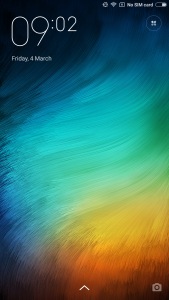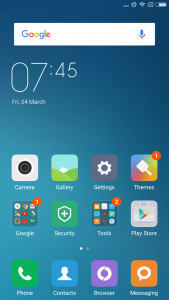
Has Xiaomi lost its mojo? Is India no longer as big a priority for the messiah of the affordably priced quality smartphones? We’ve personally had quite a positive outlook towards the upstart but we’d be remiss not to mention that the public sentiment has been ebbing to a degree thanks to the proliferation of competitors from the land of the Red Dragon. Clearly these sentiments weren’t lost on Xiaomi as was evidenced by the rather emotional monologue by Hugo Barra, face of Xiaomi India, at a recent event in Delhi. The man who has rapidly become a bit of an icon in the technology world in India led an emphatic if not a rather circuitous presentation answering these concerns and more by announcing the launch of the Redmi Note 3, more specifically the version that is powered by Qualcomm’s Snapdragon chipset. While the audience cheered, our thoughts veered more towards the handset itself and its role in an ecosystem that is much larger than from two years ago when the Redmi 2 was a trendsetter. We’ve had access to the device for a couple of days now and with the pricing revealed, are now in a position to give a more nuanced opinion on the Redmi Note 3. Read on for our review of Xiaomi’s latest.
Xiaomi Redmi Note 3 (Pro) specifications
- 5.5-inch (1920 x 1080 pixels) Full HD IPS display, 178-degree viewing angle
- Hexa-Core Snapdragon 650 (4x 1.4GHz ARM A53 + 2 x 1.8 GHz ARM A72) 64-bit processor with Adreno 510 GPU
- 2GB RAM with 16GB storage / 3GB RAM with 32GB storage, expandable memory with microSD
- MIUI 7 based on Android 5.1.1 (Lollipop)
- Hybrid Dual SIM (micro + nano/microSD)
- 16MP rear camera with PDAF, dual-tone LED Flash, f/2.0 aperture, 1080p video recording, 120fps slow-motion
- 5MP front-facing camera, f/2.0 aperture, 1080p video recording
- Dimensions: 150x76x8.65 mm; Weight: 164g
- Infrared sensor
- 4G LTE with VoLTE, Wi-Fi 802.11 ac/b/g/n (2.4 / 5GHz), Bluetooth 4.0, GPS + GLONASS
- 4000mAh (minimum) / 4050mAh (typical) battery with fast charging
Design
With the Redmi Note 3, Xiaomi too joins the club of affordably priced handsets with a metal body. A quick look around the handset shows that the improvement in materials was definitely the focus point. Visual flourishes have been kept to a minimum and it’s quite apparent that the design team was mostly focused on the upcoming Mi5 rather than the Redmi Note 3.
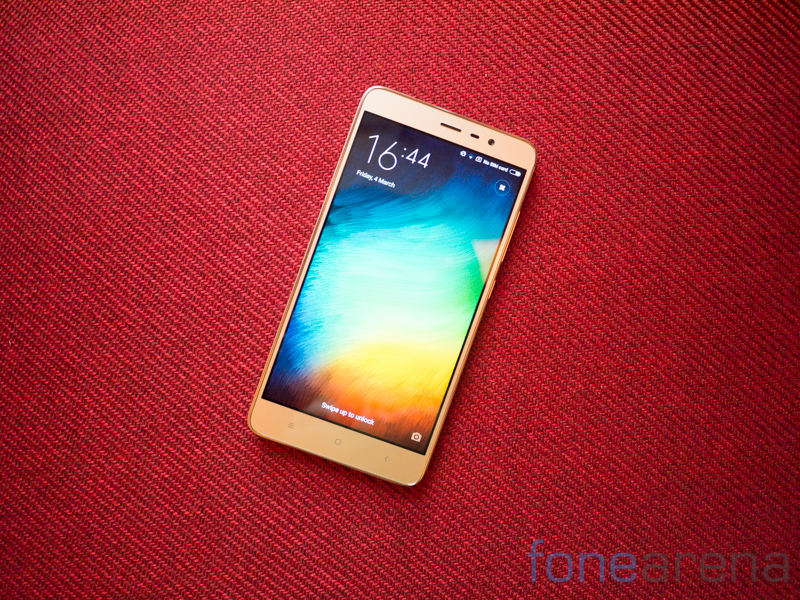
The front of the phone is the relatively plain and generic looking. That’s not to say that this is a bad-looking phone of course. Gone are the massive bezels, a raised edge runs all the way around the face of the phone which should offer a bit of protection when placing it face down. This last bit is particularly important since the handset does not ship with Gorilla Glass protection. Beyond that, you’ll notice three backlit capacitive buttons that correspond to the usual menu, home and back keys. Up above the 5.5 inch display is the earpiece, proximity sensor and front facing camera. A notification LED is also discretely embedded here and is visible only when illuminated.
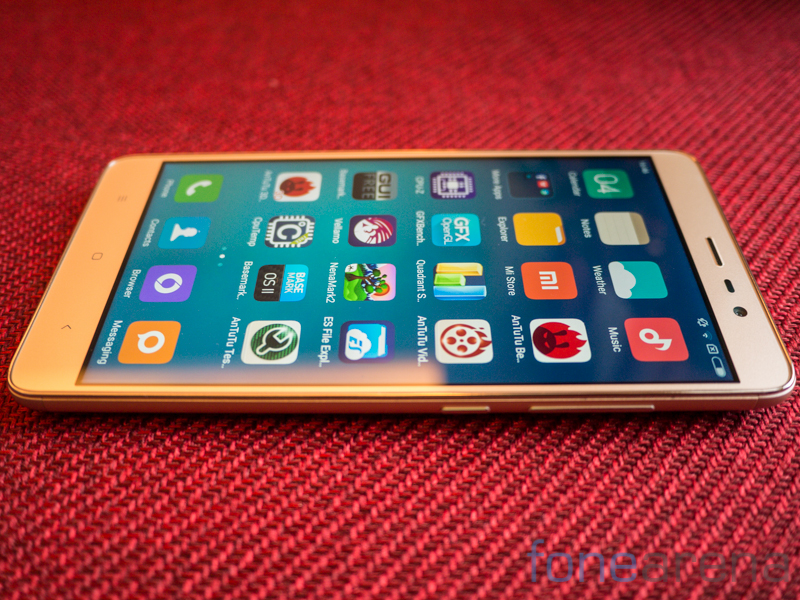
As mentioned earlier, the display is flanked by a raised edge on all sides. Gently curved, it doesn’t dig into your thumb as you flick around stuff on the screen. The right side sports the volume rocker while below it is the power key. Both the buttons offer fantastic tactile feedback. Switch over to the left hand side and you’ll notice that single tray that houses both the SIM card slots. You can either place two nano SIM cards here or switch out one SIM for a microSD card. The top edge of the phone sports the 3.5mm audio jack as well as an iR blaster while the microUSB port lies at the bottom.
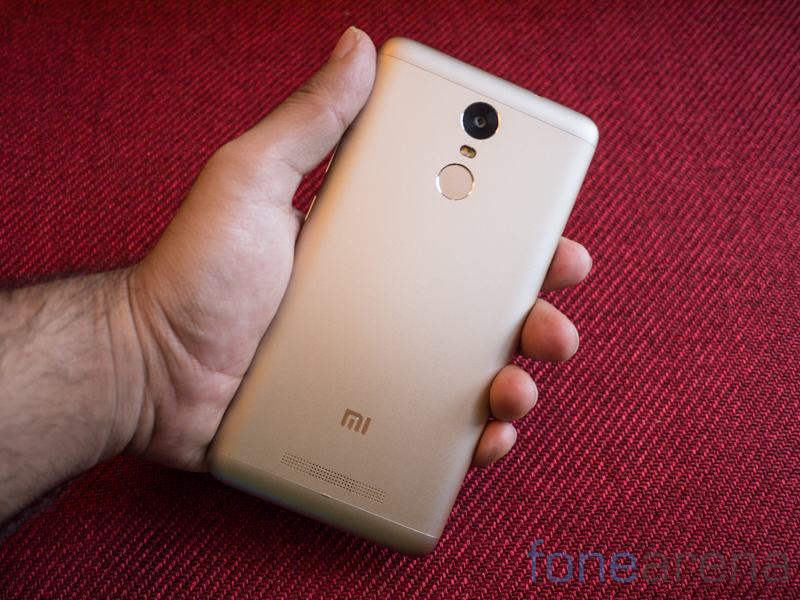
Flip the handset over and you’ll be subjected to a continuation of the same minimalist aesthetics. The smooth metallic surface is interrupted in parts by the fingerprint scanner and the camera module with a dual LED flash lined up between them. The stickler in me really appreciates the fact that both the camera and the fingerprint modules are exactly same shape, size which adds symmetry to the design and emphasizes the focus on the same. Going a step further, the addition of a 1mm notch that raises the handset and prevents audio from getting muffled is a sign of design maturity and representative of a company that values quality even on a budget handset. Unfortunately it doesn’t help that the speaker itself doesn’t go all that loud. Plastic end caps are placed at the top and bottom of the back to facilitate better antenna performance.
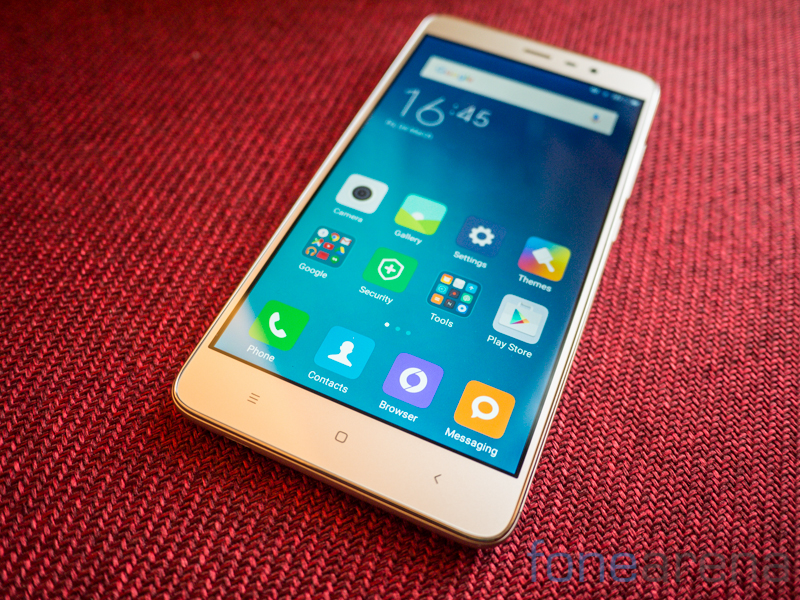
For the Redmi Note 3, the focus seems to have been on build quality and the smaller details rather than sweeping design flourishes. That is not to say that the phone is unappealing to look at. Far from that in fact, the metal bodied Redmi Note 3 adds just enough nuances to its design identity that makes it hold its own against the competition.
Software
Like all Mi devices, the Redmi Note 3 too is running MIUI. In its 7th iteration, MIUI 7 is a refined affair that combines the simplicity of the iOS UI paradigm with the power of Android while throwing out any semblance of Material Design out the window. It is rather unfortunate that for a brand new phone running on a brand new chipset, the core OS is decidedly old with no visibility in sight for an update. There is a case to be made for the stability of Android 5.1 and to their credit, Xiaomi keeps adding fresh features and security patches via updates but the benefits brought upon by Android 6.0 can’t be discounted either and we hope to see the update sooner rather than later.
In terms of UI navigation, the interface eschews an app drawer and makes do with a 2 step UI that drops you straight to the homescreen from the lockscreen. You can of course make folders to sort out apps based on your preference. Pulling down the screen from the top reveals the familiar notifications shade and swiping right will take you to the quick toggles page.
Above and beyond the core Mi apps, the phone comes pre-installed with a bunch of other apps including Facebook, WPS Office, Swiftkey and Fleksy. Interestingly, Opera Max is also built into the handset but lacks a homescreen icon. Since the handset now includes a fingerprint scanner as well, necessary additions have been made to the software to add an interface for it.

Our pre-release build lacked certain software features and also had a tendency to crash during very specific tasks like attaching images in bulk to an email. We’re fairly confident this will be fixed in the final version of the firmware. Regular buyers can also expect to see additions like a blue light filter that reduces strain on your eyes. A nice new feature is the ability to get a fresh new wallpaper everyday through a large pool of images being curated by Getty, 500px and more. You can shuffle through the selection of the day or save a favorite, right from the lockscreen itself. The Mi Mover app makes it a cinch to migrate from an older Mi device to the brand new Redmi Note 3. Overall, this is more of the same MIUI that you have come to love (or hate).
Performance
The Redmi Note 3 is the first device to be powered by a Snapdragon 650 chipset and the company did a good job of highlighting the abilities of the chip at the launch event. Over the last few quarters, Qualcomm has had more misses than hits with their releases due to varying factors including thermal throttling, heating issues or even plane old poor performance, so we were quite cautious in our enthusiasm for their latest. We needn’t have worried though as it appears that the chipset giant has a winner on their hands.
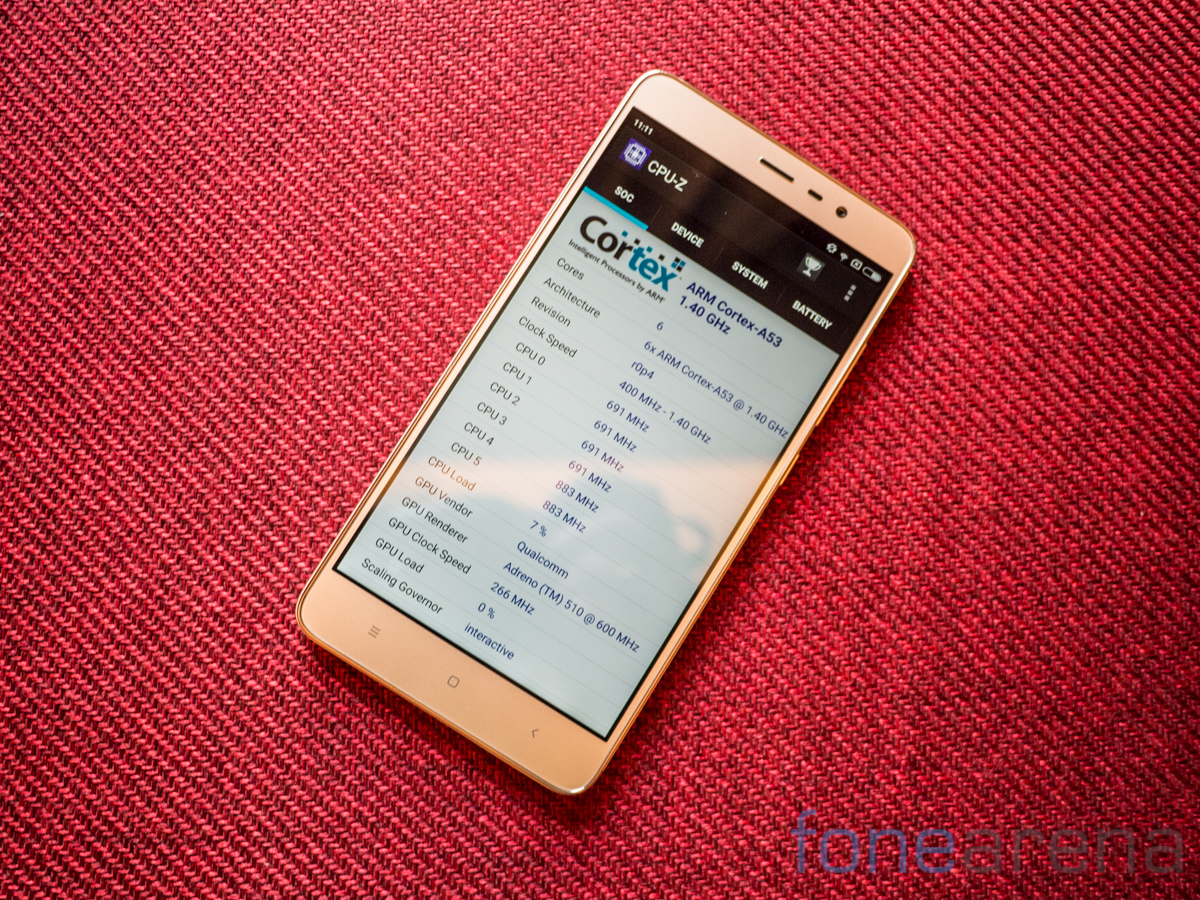
A hexa core processor, the Snapdragon 650 mixes four Cortex A53 cores clocked at 1.4Ghz with two Cortex A72 cores clocked at 1.8Ghz. This is the same configuration as the Snapdragon 808 but one ups it by replacing the 808’s A57 cores with A72 cores which perform better due to a newer process. This performance benefit is most visible in single threaded applications. In multi-threaded applications, octa core chipsets like the Helio X10 can still potentially rival or outperform the 650. All said and done, the Snapdragon 650 looks like a very good entry in the series and we expect it to become the chipset of choice for most mid-range handsets over the course of this year. We witnessed great performance and more importantly no thermal throttling whatsoever. The handset stayed well within the recommended thermal envelope throughout extensive usage across gaming, browsing, multimedia and voice calling in our usage focused testing. Beyond just the processor, the phone is equipped with 2GB / 3GB of RAM depending on the variant. The onboard GPU too is an Adreno 510 which compares favorably with the Adreno 418 of the comparable Snapdragon 808. All in all, we were very satisfied with the general performance of the handset other than the minor optimization related issues we mentioned earlier. If you are interested in synthetic benchmarks, we encourage you to take a look at our benchmarks post. We’ve embedded a few key benchmarks below.
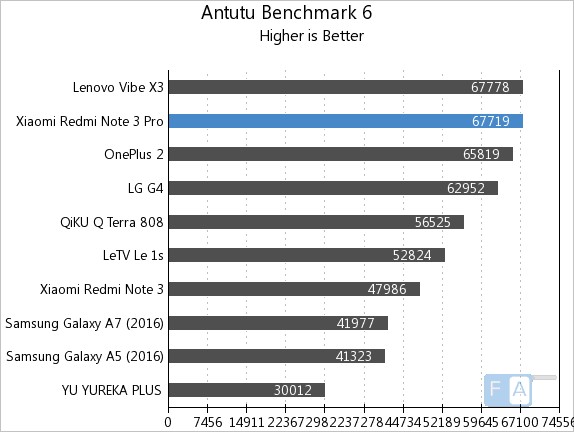
In the AnTuTu benchmark, the phone scored 67719 points and ranked near the top of our benchmark table.
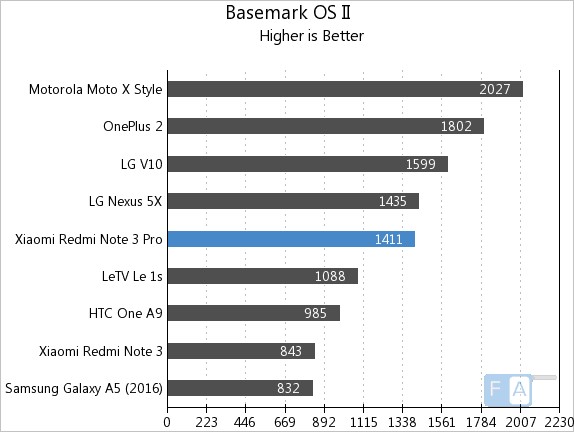
In Basemark OS II with a score of 1411 points, the Redmi Note 3 scored much higher than its competitors. Check out the complete set of Redmi Note 3 benchmarks here.
Display
The Redmi Note 3 is equipped with a 5.5 inch 1080p display. The LCD unit is fairly well saturated though the colors don’t really pop out like on some of the competitor’s devices. We quite like the toned down, natural looking colors but it is possible to increase the contrast and dynamic range of the display using various software tweaks included onboard.
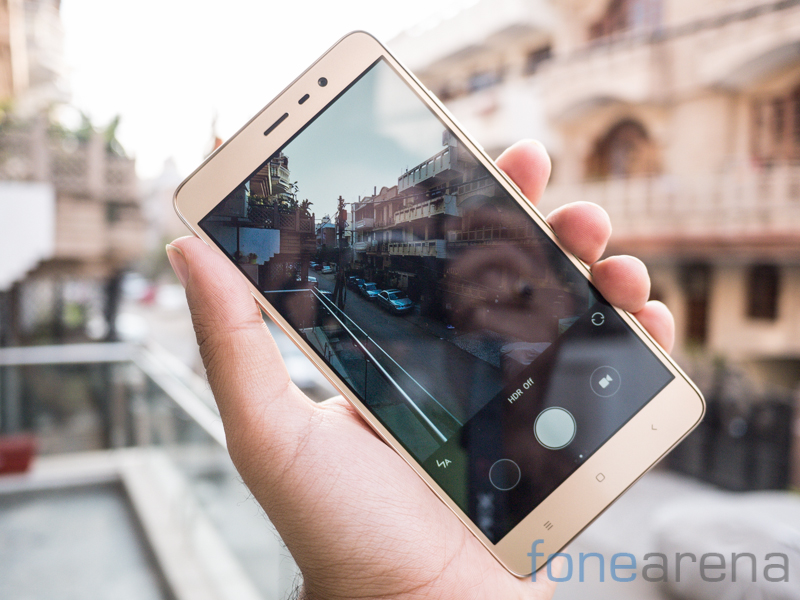
Testing out the standard mode, the white balance veered towards the cooler end of the spectrum but the overall sharpness and viewing angles was praise worthy. Equipped with local tone mapping, the screen can make darker areas of the image brighter under brighter lighting to make it more visible. This ability to play around with the dynamic range without manipulating the overall brightness level works well enough and usually produces good results. Brightness levels are adequate though not quite spectacular. Still, you shouldn’t have issues viewing the screen outdoors. Do keep in mind that the display does not have a Gorilla Glass coating on top so you’d be well served by placing a screen protector of some sort.
Camera
The Achilles heel of the Redmi Note 3 has to be its camera. For a device that impresses at all quarters, the camera proved to be quite a letdown. Don’t get us wrong, it isn’t a poor camera but the high expectations set by the quality of the camera hardware usually found on Xiaomi devices in addition to the overall high-end internals make us feel that the camera unit isn’t quite as good as it could be. In terms of hardware you get access to a 16MP sensor with phase detection autofocus, f2.0 aperture, a dual tone LED flash and the ability to capture 1080p video. The front shooter has a 5MP sensor.
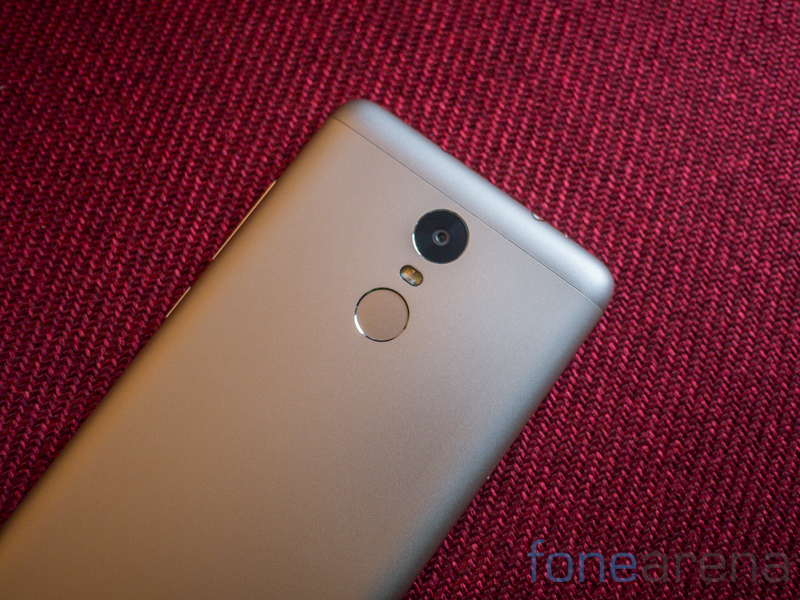
The camera performs just about adequately in bright sunlit conditions but isn’t very good at handling bright skies. The dynamic range is unimpressive and the HDR mode doesn’t do much to solve this issue. The camera takes passable shots but these aren’t going to win you any prizes. The Mi4i and the much older Mi4 both handily surpass the Redmi Note 3 in camera capabilities. Video shot on the phone is particularly poor and the handset appears to upscale the footage which makes objects appear jagged around the edges. You can browse through a full range of camera samples that include close-ups, low light shots and HDR captures below.

Connectivity & Battery Life
Connectivity options on the Redmi Note 3 include 4G LTE with VoLTE, Wi-Fi 802.11 ac/b/g/n (2.4 / 5GHz), Bluetooth 4.0, GPS and GLONASS. Of this, the VoLTE support is perhaps most striking given that the upcoming Reliance Jio network and infact even the likes of Airtel will transition to it. The phone supports 4G on both the SIM slots and also across bands 3,5,40 and 41. I live in an area with a particularly poor cellular network and despite that, the phone managed to latch on to a 4G signal more often than its competition. While not perfect, call drops were noticeably lower on the Redmi Note 3.
If we just had one word to describe the battery life of the Redmi Note 3, it would probably be epic or similar. An enormous 4050 mAh battery has been stuffed inside that svelte 8.65mm thin shell with no appreciable weight penalty. Add to it the pretty frugal chipset and you’re looking at a phone that could last you two full days under regular use. Even with heavy usage, you’ll be hard pressed to deplete the battery by the end of day. The phone has the first generation Quick Charge technology built into it which’ll expedite the charging process to a degree. We regularly got at least 7 hours of screen on time which is pretty fantastic in our opinion. Good job, Mi. You’ve managed some amazing engineering on the Redmi Note 3.
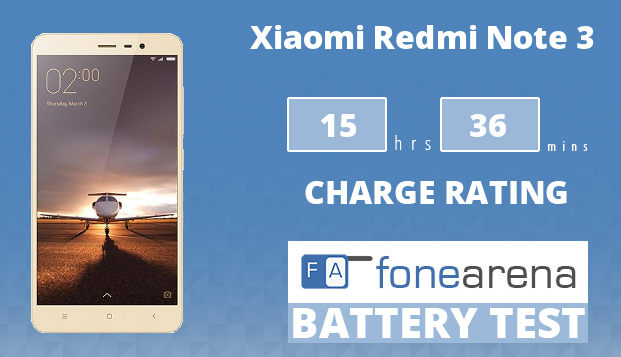
It got an One Charge Rating of 15 hours and 36 minutes. Check out the complete set of test results here.
Conclusion
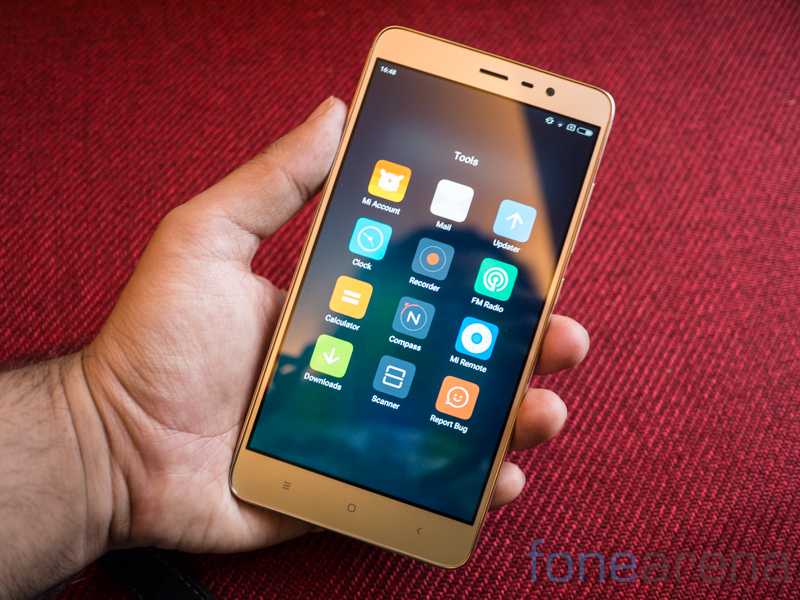
Simply put, the Redmi Note 3 doesn’t face much competition. The combination of high-end internals, great build quality and good software makes it a formidable package. Factor in the seemingly never-ending battery life, the Rs. 9,999 price point and you are looking at package that is serious value for money. A better camera would have potentially made this the perfect affordable handset but all said and done, the Redmi Note 3 is one of the best handsets available at its price point. I’d take it a step further and say that anybody looking for a sub Rs. 20,000 smartphone should take a serious look at the Xiaomi Redmi Note 3. The phone goes on sale starting 9th March and will be a timed exclusive to Amazon India before making its way to other online retailers. The phone will also be available through offline retail channels.
Pros
- Battery life
- Performance
- Build Quality
- Price
Cons
- Camera could be better
- Minor bugs in the software

